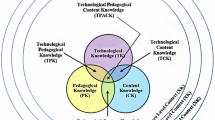Abstract
Adoption of Materials Science and Engineering (MSE) into the pre-college classroom is an ideal strategy for addressing Next Generation Science Standards (NGSS), specifically the Science and Engineering Practices. MSE offers core science and engineering topics that can be incorporated into existing Science, Technology, Engineering, and Mathematic (STEM) curricula through teaching modules. Using MSE as a teaching vehicle, the Center for Research on Interface Structures and Phenomena (CRISP) conducted a series of small-scale studies of its teacher professional development workshops and a student summer program, along with related teaching modules, in an effort to measure the contribution MSE has on students and K-12 STEM educators. Based on participant survey feedback, CRISP found improvement in students’ MSE knowledge, interests, and career goals. For teachers, in addition to improving their MSE knowledge, they also increased their comfort and confidence in teaching MSE concepts in their classroom. These results provide evidence for the use of MSE modules as productive teaching tools for NGSS Science and Engineering Practices, as well as producing workforce-competitive STEM students.
Similar content being viewed by others
References
NGSS The Need for Standards. “Next Generation Science Standards: For States, By States.” NGSS Standards. N.p., 2013. Web.
NGSS Three Dimensions of Learning. “Next Generation Science Standards: For States, By States.” NGSS Standards. N.p., 2013. Web.
N. Ferrari, C. Jenkins, J. Garofano, D. Day, T. Schwendemann, and C. Broadbridge. Research Experiences for Students: Interdisciplinary skill development to prepare the future workforce for success. 2015 MRS Proceedings, 1762, mrsf14-1762-aaa08-03 doi:10.1557/opl.2015.154.
Agrawal, AJ. “8 Tech Trends Changing How We Work In 2016.” Forbes. 11 Jan. 2016. Web.
“About.” Available at: http://igem.org/About Accessed 10 Nov. 2016. N.p., Web.
“Teacher Developed Lesson Plans and Modules.” Center for Research on Interface Structures and Phenomena. Center for Research on Interface Structures and Phenomena, 2016. Web. 18 Nov. 2016. http://crisp.southernct.edu/?page_id=558.
“Mousetrap Catapult.” Center for Research on Interface Structures and Phenomena. Center for Research on Interface Structures and Phenomena, 2016. Web. Accessed 18 Nov. 2016. http://crisp.southernct.edu/?page_id=1326.
“Past CRISP Events.” Center for Research on Interface Structures and Phenomena. Center for Research on Interface Structures and Phenomena, 2016. Web. Accessed 18 Nov. 2016. http://crisp.southernct.edu/?page_id=679.
“Aerogels.” Center for Research on Interface Structures and Phenomena. Center for Research on Interface Structures and Phenomena, 2016. Web. Accessed 18 Nov. 2016. http://crisp.southernct.edu/?page_id=863.
Author information
Authors and Affiliations
Rights and permissions
About this article
Cite this article
Granucci, N., Jenkins, C., Bauer, M. et al. Teaching Materials Science and Engineering (MSE) in the Pre-College Classroom as a Vehicle for NGSS Implementation. MRS Advances 2, 1661–1666 (2017). https://doi.org/10.1557/adv.2017.102
Published:
Issue Date:
DOI: https://doi.org/10.1557/adv.2017.102




